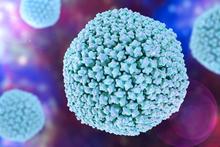Jamie Almeida (Fed)
Research Biologist
The Biomarker and Genomic Sciences Group focuses on a variety of standards to improve measurements and diagnostics in the health care field including characterization of gene delivery systems, cancer biomarker standards and cell line authentication methods.
- Consensus Standards
- Serve as a convenor of the International Organization for Standardization (ISO) Technical Committee 276 (TC 276) Biotechnology, Subcommittee 1 (SC1) Analytical Methods, Working Group 3 (WG3) Nucleic Acids.
- Serve as a co-lead in the ISO TC 276/SC1/WG1/16921 document series focusing on gene delivery systems terminology, viral vector quantification, and lipid nanoparticle characterization and quantification.
- Serve as an active member of the ATCC/ANSI Standards Development Organization. Updating ATCC/ANSI ASN-0003-2015: Species-Level Identification of Animal Cells through Mitochondrial Cytochrome c Oxidase Subunit 1 (CO1) DNA Barcodes.
- Reference Materials
- Performed genomic measurements using droplet digital PCR and qPCR to certify the following cancer biomarker reference materials: Standard Reference Material 2373 (certified for HER2 copy number) and Reference Material 8366 (certified for MET and EGFR copy number).
- Characterization of Reference Material 8399 for a mouse allelic ladder to be used for allele call determination in mouse cell line authentication using short tandem repeat genotyping (in progress).
- Consortium Work
- Serve as a co-lead for the Gene Delivery Systems Working Group in the Flow Cytometry Standard Consortium. Please visit the consortium page for more information.
- Work with stakeholders to join the consortium and contribute gene delivery system materials, instrumentation, and expertise.
- Organize and plan the first interlaboratory study to focus on physical titer measurements including genome titer, capsid titer, and particle concentration.
- Develop protocols to reduce variability and improve reproducibility for physical titer measurements for gene delivery systems.
- Serve as a co-lead for the Gene Delivery Systems Working Group in the Flow Cytometry Standard Consortium. Please visit the consortium page for more information.
- Research and Development
Coordinate the gene delivery systems effort in the Biosystems and Biomaterials Division. Please visit the program page for more information.

Illustration of adenovirus serotype 5 particle - Working with NIST colleagues to improve functional measurements of adenovirus in cell-based assays using live cell microscopy.
- Collaborate with NIST IT group to develop AI platform to be used for plaque predications and optimized counting techniques.
- Collaborate with NIST colleagues to collect metabolomics measurements on serum-free HEK293T cells to determine cell health metrics when preparing cells for functional assays in order to improve reproducibility.
- Cell Line Authentication
- Co-inventor of the method for mouse cell line authentication using a short tandem repeat (STR) targeted multiplex PCR assay.
- US Patent 9,556,482
- US Patent 10,745,753
- Organized and led the Mouse Cell Line Authentication Consortium to validate 19 mouse STR markers for genotyping mouse cell lines for identification. The outcome of the consortium led to the development of a mouse STR profile repository on the NCBI BioSample Database and publication of the interlaboratory results from participating laboratories.
- Co-inventor of the method for mouse cell line authentication using a short tandem repeat (STR) targeted multiplex PCR assay.
Awards
- NIST William P. Slichter Award, "for Organization of a consortium to validate a DNA genotyping method, database, and materials to authenticate the identity of mouse cell lines", 2021
- NIST Judson C. French Award, “for development of copy number standard reference material SRM 2373 for diagnosing cancer”, 2016
- US Department of Commerce Bronze Medal Award, “for development of a method for mouse cell line authentication”, 2015
- NIST Safety Award, “for developing and promoting biosafety training”, 2012
Selected Publications
Publications
Patents (2018-Present)
Created October 9, 2019, Updated September 30, 2025


